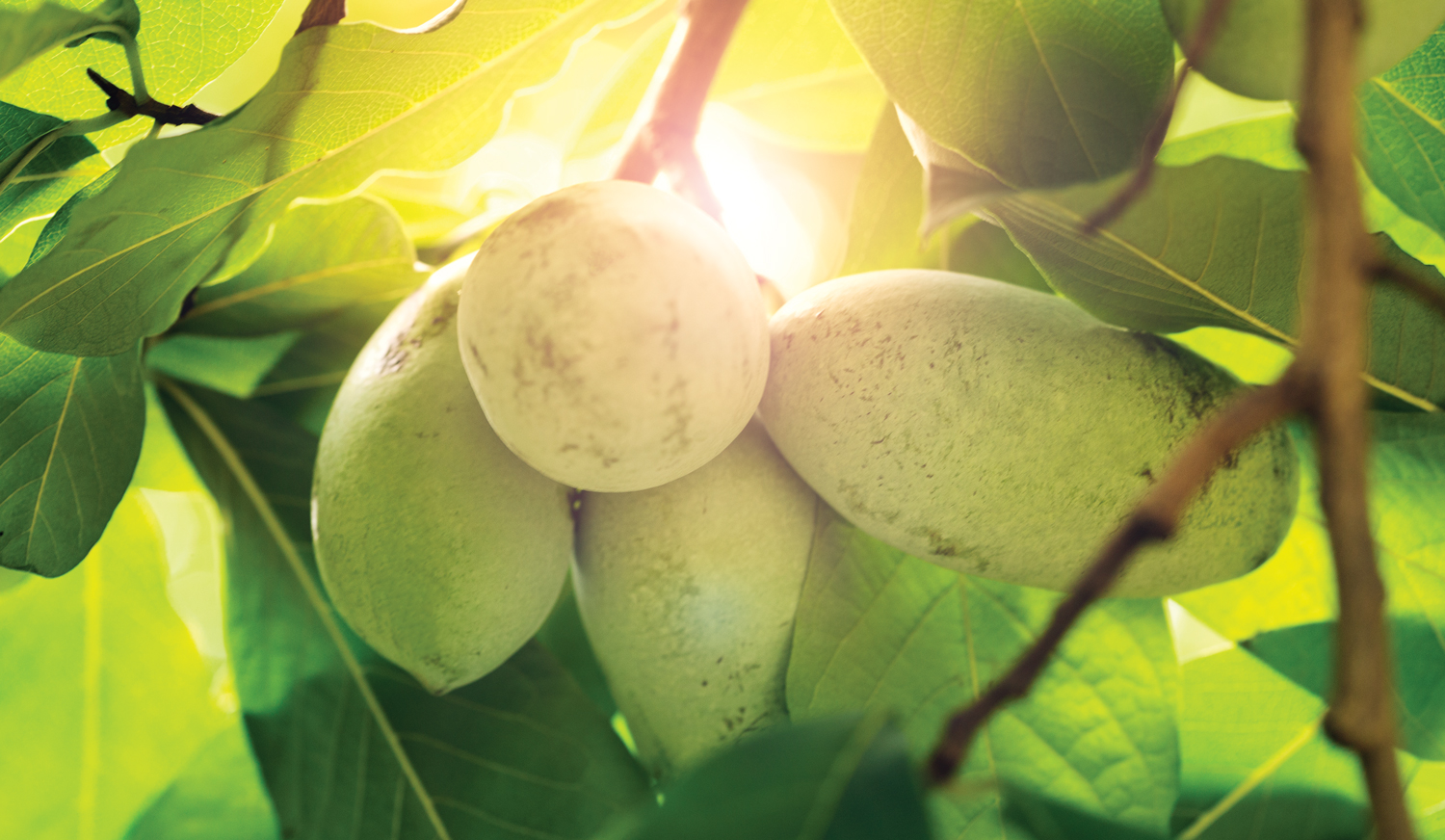Last Bite: The Mysterious Pawpaw
By Emma Honcharski
It tastes like a mix of a mango and a banana, it makes the best ice cream and cream pie we’ve ever had, it grows on a tree in your Pittsburgh backyard. And no, it’s not too good to be true!
The pawpaw is the largest native fruit to the United States, but all of this fruit’s relatives are found only in the tropics, making the pawpaw kind of an Easter egg to be found in this area. Even with an increasing popularity among foodies, there’s still some level of mystery to the pawpaw — and maybe that’s part of the appeal. If they’ve been growing naturally across the eastern half of the country, long enough for Lewis and Clark to have gushed over them in their journals, and George Washington to enjoy them chilled for dessert (according to legend, any ways), why haven’t you tried one yet?
A short harvesting season and an even shorter shelf life make them difficult to distribute commercially, so while you may have seen them in the backyard at your grandparents’ cabin, you probably haven’t seen them in a grocery store. Our relationship with the food system has changed over the past few centuries, disconnecting us from the foods that grow in the places we live and dragging us toward industrialized, processed products. But things are starting to shift, and the comeback to loving local food is slow and steady.
Pawpaws are here to remind us of that. Andrew Moore, the Pittsburgh-based author of “Pawpaw: In Search of America’s Forgotten Fruit,” says we’ve left the dark ages of the pawpaw and now live in the pawpaw revival.
Joining in on the revival on a local level, Justin Severino, chef and co-owner of Cure, has featured them on his menu for the past five years. And they’re not going away any time soon! His pawpaw cream pie is Cure’s most popular dessert, aside from the chocolate mousse cake that’s been on the menu since day one. This year, Cure will be bringing a pawpaw frozen dessert on board, and Morcilla, Severino’s other restaurant, will have a pawpaw crema catalana, too.
You may find some at the East End Food Co-Op, too, but they’re definitely a hot commodity. For the more adventurous, the foragers at heart, keep an eye out on your next walk through your neighborhood or Riverview Park. TreePittsburgh has sold over 300 pawpaw tree seedlings during the past three years to forest restoration projects, and because of the warm winter we’re leaving behind, this season is expected to be plentiful for pawpaws. The fruits are unmistakable — green and golden yellow when ripe from mid-August to October — and the broad leaves on the trees smell just like green pepper! The pawpaw is a fruit that will bring us closer to the land we live on, teach us about the history of our food system, and keep us foraging for more.
Andrew Moore, thepawpawbook.wordpress.com.
Cure, curepittsburgh.com.
Morcilla, morcillapittsburgh.com.
Leona’s Ice Cream Sandwiches, leonaspgh.com.
B52, b52pgh.com.
East End Food Co-op, eastendfood.coop.
TreePittsburgh, treepittsburgh.org.





